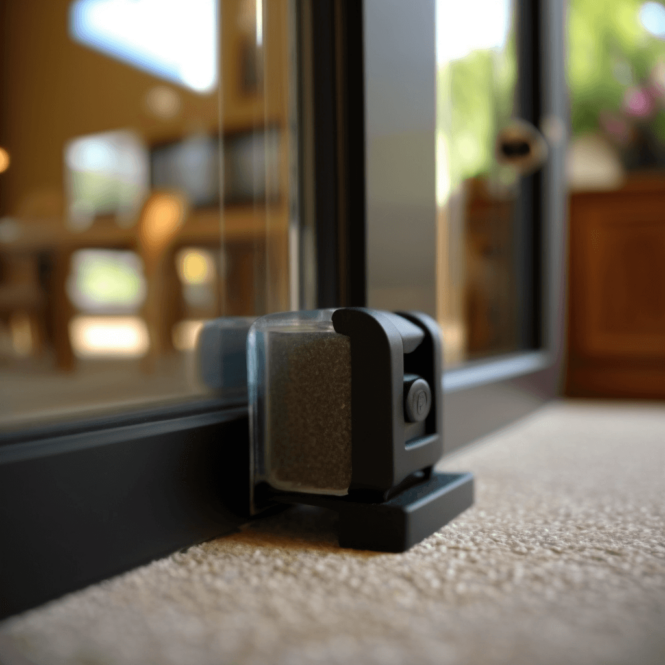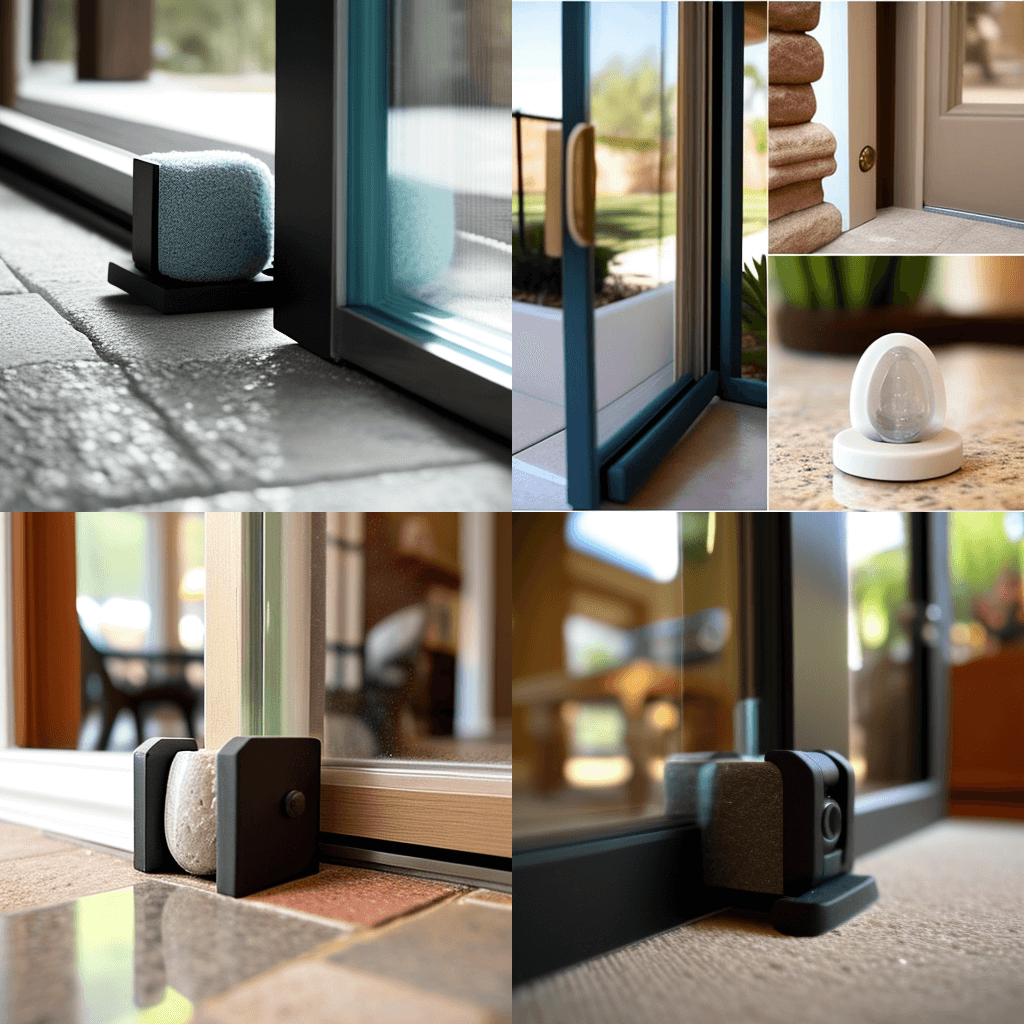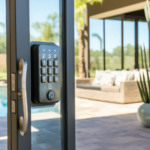
Sliding doors are a popular feature in modern homes. They offer several benefits, such as allowing natural light and creating an open floor plan. However, they pose a safety risk, especially for children and pets.
One of the most common accidents associated with sliding doors is the door slamming shut or sliding off the track. It would be best to have a sliding door stopper to improve your home’s safety and security.
This article will discuss the different types of sliding door stoppers, the factors to consider when choosing one, and how to install them.
What is a Sliding Door Stopper?
A sliding door stopper is a small device to prevent sliding doors from slamming shut or sliding off their tracks. It is a simple yet effective way to keep your family and pets safe from accidents caused by sliding doors. Sliding door stoppers come in various shapes and sizes, but all serve the same purpose.
How Does a Sliding Door Stopper Work?
A sliding door stopper is typically made of rubber or plastic and works by attaching it to the top of the sliding door frame. When the door is fully open, the stopper prevents the door from sliding any further.
It means that the door will not slam shut, which could cause injury or damage to the door itself. Additionally, sliding door stoppers can help keep the door on its track, preventing it from jumping off and causing an accident.
Why Do You Need a Sliding Door Stopper?
If you have young children or pets, you know how quickly they can get into mischief. Sliding doors are a hazard because they are heavy and can move quickly. When a sliding door slams shut, it can cause serious injury, especially to small fingers and toes.
A sliding door stopper is an inexpensive and effective way to prevent these accidents from happening. Additionally, sliding door stoppers can help prolong the life of your sliding doors by preventing them from jumping off their tracks.
Types of Sliding Door Stoppers
There are several types of sliding door stoppers available on the market. Each type has its advantages and disadvantages. Here are the most common types of sliding door stoppers:
Wedge Stoppers
Wedge stoppers are the most basic type of sliding door stopper. They are made of rubber or plastic and are placed at the bottom of the sliding door track. They create a wedge between the door and the track, preventing the door from sliding.
Stick-On Stoppers
Stick-on stoppers are adhesive pads that stick to the sliding door frame. They are easy to install and remove and are ideal for temporary use.
Clamp Stoppers
Clamp stoppers are designed to clamp onto the sliding door frame. They are more durable than stick-on stoppers and are suitable for long-term use.
Floor-Mounted Stoppers
Floor-mounted stoppers are installed on the floor and are designed to prevent the sliding door from moving. They are suitable for heavy doors and high-traffic areas.
Track Stoppers
Track stoppers are installed on the sliding door track and prevent the door from sliding. They are easy to install and remove and are suitable for temporary use.
Factors to Consider When Choosing a Sliding Door Stopper
Before choosing a sliding door stopper, there are several factors you need to consider. These include:
Type of Sliding Door
Different types of sliding doors require different types of stoppers. For example, a wedge stopper may not be suitable for a heavy sliding door.
Size and Weight of the Door
The size and weight of the sliding door will determine the type of stopper you need. For heavy doors, a floor-mounted stopper is ideal.
Material and Durability
The material and durability of the stopper are important considerations. A durable stopper made of high-quality material will last longer and provide better protection.
Ease of Installation and Removal
Choose a stopper that is easy to install and remove. It will save you time and effort.
Compatibility with Other Safety Devices
If you have other safety devices in your home, such as a home security system, choose a compatible stopper.
Benefits of Using a Sliding Door Stopper
Using a sliding door stopper offers several benefits. These include:
- Improved Safety and Security: Sliding door stoppers improve safety and security in your home by preventing unauthorized access and protecting children and pets from accidents.
- Protection from Intruders and Burglars: Sliding doors are a common entry point for intruders and burglars. Using a sliding door stopper makes it harder for them to enter your home.
- Prevention of Accidental Injuries: Sliding doors can cause accidental injuries, especially to children and pets. A sliding door stopper can prevent these accidents from happening.
- Energy Efficiency and Noise Reduction: Sliding door stoppers can also improve energy efficiency and reduce noise by preventing drafts and keeping the room insulated.
How to Install a Sliding Door Stopper
Installing a sliding door stopper is a simple process that you can do yourself. Here are the steps to follow:
- Determine the type of stopper you need based on the factors mentioned above.
- Clean the sliding door track or frame where you will install the stopper. Ensure no dirt, dust, or debris can interfere with the stopper’s grip.
- If installing a wedge stopper, place it at the bottom of the sliding door track. Make sure it creates a tight wedge between the door and the track.
- If you’re installing a stick-on stopper, remove the adhesive backing and place it on the sliding door frame where you want it to be. Apply pressure for a few seconds to make sure it sticks.
- If you’re installing a clamp stopper, position it on the sliding door frame where you want it to be. Tighten the clamp until it’s firmly attached to the frame.
- If you’re installing a floor-mounted stopper, position it on the floor where you want it to be. Use screws or bolts to attach it to the floor.
- When installing a track stopper, slide it onto the sliding door track until it reaches the desired position. Tighten the screw to secure it in place.
- Test the sliding door to ensure the stopper holds it in place. Adjust the stopper if necessary.
Conclusion
Sliding doors offer several benefits but can also pose a safety risk. Using a sliding door stopper is an effective way to improve safety and security in your home. There are several types of stoppers to choose from, each with its advantages and disadvantages.
When choosing a stopper, consider the type of sliding door, size and weight of the door, material and durability of the stopper, ease of installation and removal, and compatibility with other safety devices. Installing a sliding door stopper is a simple process that you can do yourself. This simple step can protect your loved ones and improve your home’s safety and security.



